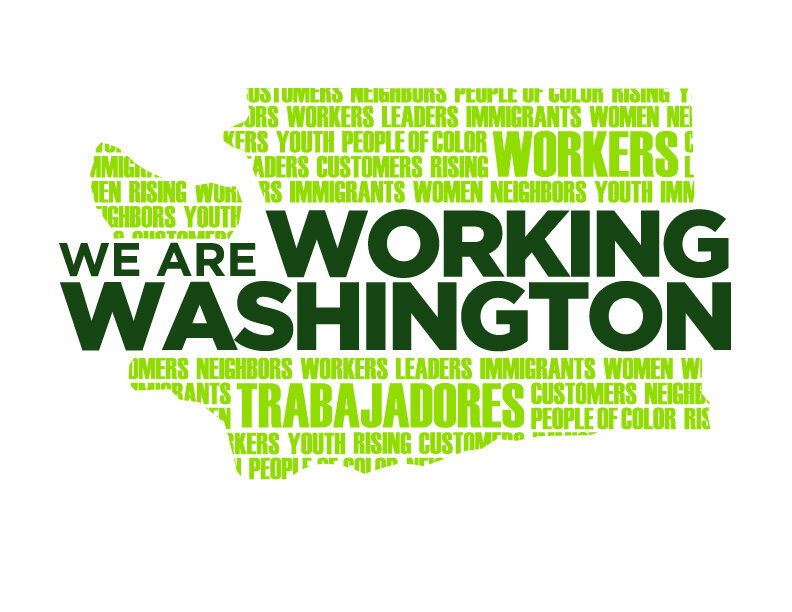On July 9th, 1949 — exactly 63 years ago — thousands of curious folks gathered around the new main terminal of Sea-Tac Airport to see the facilities. The mood was exciting: propeller planes roared on the runway, newspaper and TV cameras snapped away, and regular people explored the terminal with its brand-new dining areas and coffee shops overlooking the new air fields.
It was the start of a new chapter in the region where efficient transportation and good jobs were to be the hallmark of this new airport. Everything was on track for our airport to be first class. Expectations were high.
But 63 years later, much of that promise is unfulfilled. These days, millions of people move through our top-notch Sea-Tac facilities each year — but their safe travels are due in part to the work of thousands of poverty-wage workers employed by low-bid airport contractors.
They are the skycaps, baggage handlers, ramp workers, fuelers, and passenger service workers who make our airport work. Many of them are immigrants and refugees who came to this area seeking a better life. All of them are working hard to put food on the table for their families. They deserve living wages, respect and the right to stand together for better working conditions.
But our airport economy today is deeply unequal. It’s a first-class airport for some, but a poverty-class airport for far too many.
The publicly-owned Port of Seattle oversees Sea-Tac Airport. When the Port was established, it was all about protecting workers and the public from the abuses of the big businesses who had a chokehold on all the transportation routes in the region.
Now — 100 years after the Port was established and 63 years after Sea-Tac opened — we are seeing something quite different. Big businesses are taking advantage of thousands of workers at our airport while our public Port turns a blind eye.
These days, the dominant airline doing business at our airport is Alaska Airlines, which controls more than half the flight at Sea-Tac. Because it dwarfs the scale of other airlines at Sea-Tac, Alaska sets the standards that other airlines emulate. What Alaska does, the whole airport usually follows.
Unfortunately, Alaska hasn’t led the way in the right direction. It has been engaging in a race to the bottom in our airport, cutting costs and trying to evade their responsibilities by contracting out work to the lowest bidder. This low-bid airport economy has created thousands of poverty-wage jobs.
This isn’t the first-class publicly-owned airport we were promised 63 years ago.
The Port and Alaska need to do their part to ensure that every worker at Sea-Tac gets paid a living wage, is treated with respect, and has the right to stand together for better working conditions.
The airport started off with high expectations where workers and passengers would both benefit from the work being done at our airport. It’s been a long time and we still have a lot of work to do to fulfill those dreams. Together let’s fulfill those expectations and exceed them.



